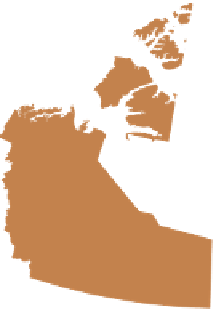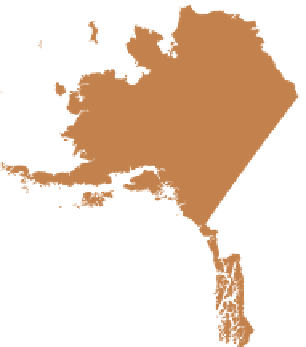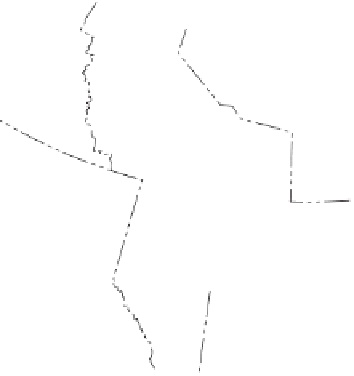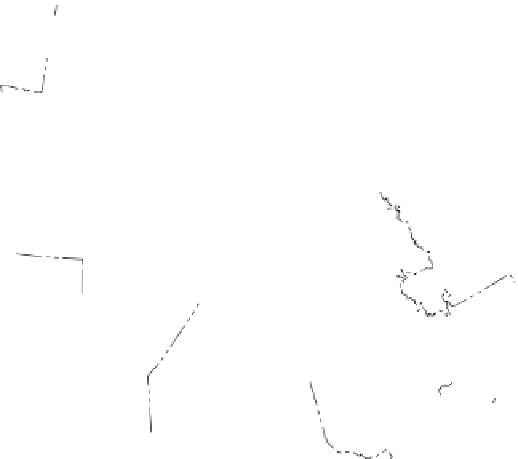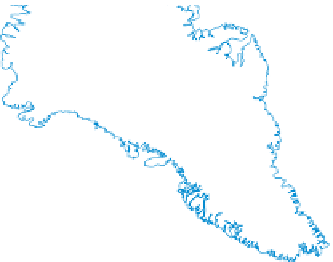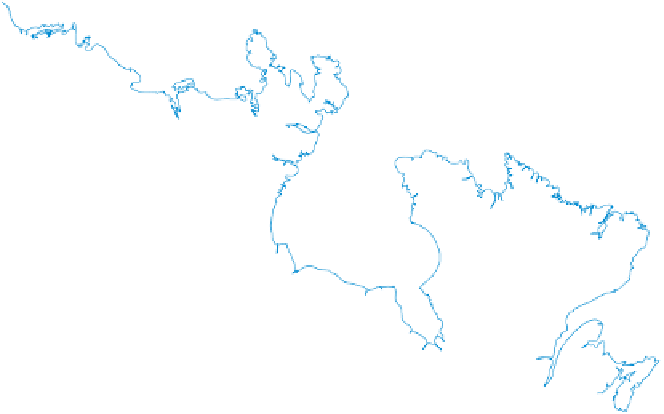Geography Reference
In-Depth Information
NORTH AMERICA -
MEDIAN FAMILY
INCOME, 2009
High
ARCTIC OCEAN
18
0
°
Over 60,000
Middle
50,000-59,999
17
0
°
Low
Below 50,000
AK
40
°
YT
NU
NT
NL
150
°
50
°
BC
AB
MB
SK
QC
PE
ON
NB
PACIFIC
NS
ME
WA
OCEAN
VT
ND
MT
MN
NH
OR
NY
WI
MA
60
°
140
°
ID
SD
MI
RI
CT
WY
PA
NJ
IA
OH
ATLANTIC
NE
DE
NV
IN
IL
MD
WV
UT
VA
CO
OCEAN
MO
CA
KY
KS
NC
TN
130
°
SC
OK
AZ
AR
NM
GA
22
°
AL
0
500
1000 Kilometers
MS
0
250
500 Miles
LA
TX
HI
FL
20
°
0
100 Km
MEXICO
Longitude West of Greenwich
0
100 Miles
160
°
155
110
°
90
°
80
°
Figure 1.16
Median Family Income (in U.S. dollars), 2009.
Data from:
United States Census Bureau and
Census Canada, 2010.
geography that compares and contrasts major regions of
the world. In this topic, we use examples from all over
the world, but our focus throughout is on a thematic
approach to human geography. Nongeographers use
some form of the regional idea all the time, even in
everyday conversation. When you plan or dream of a
vacation in the Rockies, or a hiking trip in New England,
or a cruise in the Caribbean, you are using regional
notions to convey what you have in mind. Used this way,
regions serve as informal frames of reference.
In geography, a region constitutes an area that shares
similar characteristics. To identify and delimit regions, we
must establish criteria for them. The criteria we choose to
defi ne a region can be physical, cultural, functional, or
perceptual.
When geographers choose one or more physical
or cultural criteria to define a region, they are looking
for formal regions. A formal region is marked by
homogeneity in one or more circumstance or phenom-
enon. A formal physical region is based on a shared
















































































